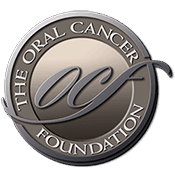Nivolumab Improved Survival For Patients With Head and Neck Squamous Cell Carcinoma
Source: www.aacr.orgAuthor: AACR Newsroom Staff NEW ORLEANS — Treatment with the immunotherapeutic nivolumab (Opdivo) improved survival for patients with recurrent or metastatic head and neck squamous cell carcinoma that progressed after platinum-based chemotherapy compared with single-agent chemotherapy of the investigator’s choice, according to results from the CheckMate-141 phase III clinical trial presented here at the AACR Annual Meeting 2016, April 16-20. “Recurrent or metastatic head and neck squamous cell carcinoma that is not responsive to platinum-based chemotherapy progresses very rapidly, and patients have a very poor prognosis,” said Maura L. Gillison, MD, PhD, a professor in the Department of Internal Medicine at The Ohio State University Comprehensive Cancer Center – Arthur G. James Cancer Hospital and Richard J. Solove Research Institute. “Treatment usually involves single-agent chemotherapy. However, no therapy has been shown to improve survival for this patient population. New treatment options are desperately needed. “This study is the first randomized clinical trial to clearly demonstrate improved overall survival for patients with platinum-refractory recurrent or metastatic head and neck squamous cell carcinoma,” continued Gillison. “We hope that the results will establish nivolumab as a new standard of care option for this patient population and thereby fulfill a huge unmet need.” CheckMate-141 was a randomized, phase III clinical trial designed to determine whether the PD-1 inhibitor nivolumab could extend overall survival for patients with platinum-refractory recurrent or metastatic head and neck squamous cell carcinoma compared with treatment of the investigator’s choice, which was any of the commonly used therapeutics docetaxel, methotrexate, or [...]
